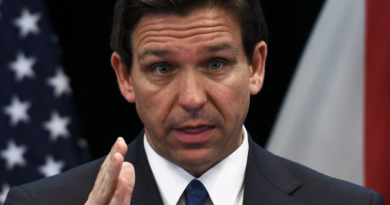Wall Street buys into Bidenomics, with the top economists at Goldman and other banks saying we could really dodge a recession
President Biden and his surrogates have been taking a victory lap, celebrating the administration’s economic accomplishments and “Bidenomics,” a media invention that the White House claimed for itself this summer. As Biden touts his economic record, bragging rights extend to…a U.S. economy that is rebounding from the pandemic faster than the rest of the developed world; almost $100 billion invested in domestic manufacturing jobs in 2023; inflation rates plummeting from the 9% range to around 4.0%; and a 3.7% unemployment rate that is the lowest since the 1960s.
Bidenomics, as unveiled by the White House in a speech in Chicago last week, aims to build the country’s economy by strengthening the middle class. Biden himself has offered it as an explicit repudiation of trickle-down economics, which was famously dubbed “Reaganomics” in the 1980s. He’s been making this broad strokes argument since the 2020 campaign trail. In his first address to a joint session of Congress two years ago, he said simply that “trickle-down economics has never worked,” but he has never adopted the media portmanteau about his economic philosophy until now.
The problem with Bidenomics, it seems, is that it just doesn’t feel good. Economists have theorized about a “richcession,” which only hits the well off, or a “rolling recession,” where different sectors undergo downturns but not the economy as a whole, or even a “non-recession recession.” And the American populace doesn’t seem to like this change from many decades of, well, trickle-down. Voters lay much of the blame at Biden’s feet. Just 34% of the public approves of his handling of the economy, according to an AP poll. The White House notes that the term “Bidenomics” itself isn’t poll tested.
But now some of Wall Street’s biggest players are echoing the White House’s optimism for a robust economic recovery.
JPMorgan shared four possible scenarios for a future recession in the U.S. and globally. The most likely, according to the bank, with a 36% chance, is that the U.S. enters a recession at the same time as the rest of the world, meaning that the country’s unusual predicament of high inflation with low unemployment wouldn’t set it up for an atypical recession.
Meanwhile, Goldman Sachs lowered the likelihood of a 12-month recession forecast to 25%, according to remarks from chief economist David Mericle on the bank’s Goldman Sachs Exchanges podcast. Goldman has been lukewarm on the possibility of a recession for several months. Mericle attributed the change in Goldman’s forecast to a rebalancing of the labor market, which has seen inflation ease without growing unemployment as some experts had theorized was the solution to the current crisis of inflation.
“We’ve seen a big decline in our jobs-workers gap from about 6 million to about 3 million. And so far, it’s been remarkably painless. We haven’t seen any increase in the unemployment rate,” Mericle says.
Although not all economists are convinced that unemployment and inflation were so closely linked to begin with. Some, like Adam Ozimek, chief economist at Economic Innovation Group, thought it was possible all along to keep the former low while striving to reduce the latter.
“Inflation has cooled down,” Ozimek told Fortune. “But unemployment hasn’t gone up. Instead, we’ve added 4 million workers to the economy. So we weren’t out of workers—that’s been debunked.”
Ozimek also said that the investment in American manufacturing included in the August 2022 Inflation Reduction Act had some role to play in adding jobs to an already hot labor market. Although it’s too early to draw any definitive conclusions, he points out.
In an interview on Bloomberg’s Odd Lots podcast, Jared Bernstein, chair of the Council of Economic Advisers, attributed the success in threading the needle between reducing inflation and low unemployment to the Biden administration’s ability to consider Americans as both consumers and workers. If the administration had just been concerned with American consumption it would have imported cheaper goods from around the globe, Bernstein argues. Instead, it invested in domestic manufacturing to ensure that prices were lowered while people didn’t lose their jobs.
“Under Bidenomics we don’t look at Americans as 100% consumers full stop. We recognize that they are also workers who depend on domestic production to get good jobs. If all you thought about was consumer spending you’d say, ‘Let me import everything to try and increase the supply and lower the price.’ If you thought about people as consumers but also workers, you’d think about both…We don’t want to hollow out our communities.”
It’s not out of place, however, to view Bidenomics’ success almost exclusively through the lens of an economic recovery. In an op-ed in Bloomberg Opinion, Matt Yglesias said the new economic doctrine was centered on the simple but meaningful “idea that the government should do everything in its power to make recessions brief and recoveries rapid.” That wasn’t the case even under Obama during the Great Recession, he pointed out, which famously weathered a “jobless recovery” in just the past decade.
Wall Street’s favorable opinions of Bidenomics are further supported by the absolute bull market in the S&P 500, rising 16.7% over the past six months.


